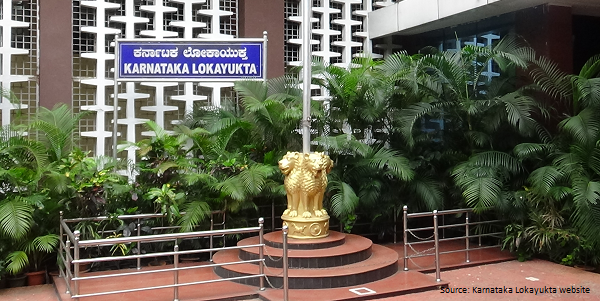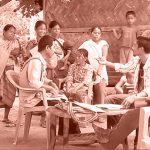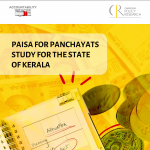
Improving Public Outreach of Lokayukta
22 July 2022
A lot has happened in Karnataka regarding the situation of corruption since I wrote my last blog a month back. A big scandal was unearthed in the recruitment of Police Sub Inspectors. The Additional Director General of Police, a senior officer, was arrested by the Anti-corruption bureau. In a few days, a former Deputy Commissioner of Bengaluru Urban District, a senior IAS officer, was also arrested based on allegations of corruption. This led to plenty of political conversation and discussion in the media.
I watched the happenings with interest, but I was cynical. On a TV show, as a panelist, I could not help remarking that the ruling party’s riposte, against the allegations that they were in cahoots with the suspended officers, was not one of denial. All they said to the opposition was that they too were corrupt. A response that hardly instils a feeling of confidence in the concerned public.
There are two points of interest here concerning these developments. First, the issue hardly excited any public comment or concern. Matters quickly quietened down, and the issue disappeared from the headlines. There was nothing more than a few comments from civil society leaders, but otherwise, the issue seemed like something that the public had come to accept.
Most important, the arrest of such high officials, in other circumstances, would have put the government in the dock. However, that was hardly the case; the issue, I suspect, will not have any impact on voting behaviour in the elections just around the corner.
The second point is that the Lokayukta or a discussion on the effectiveness of the institution was completely missing in the debate. That was to be expected, because of the marginalisation of the post in Karnataka; it has been vacant for the past three months after the previous incumbent retired. Police officials posted with the Lokayukta have been removed, and the institution is more or less in suspended animation.
Thus it is, at least from the experience of Karnataka, not a good time to discuss how the Lokayukta could improve public outreach.
Yet, as I said in my previous blog, to reach out and gain public support and public confidence, the best way is for the Lokayukta to be public-facing.
From experience, the simple way for the Lokayukta to reach out to the public has been through field inspections, public meetings, discussions, and seminars. About two decades back, a Lokayukta began the practice of surprise inspections of government offices. This hit the headlines and was widely appreciated by the public. However, things quickly turned sour.
First, the bureaucracy did not like this approach at all. Second, the Lokayukta himself succumbed to the temptation of playing to the gallery, berating officers, sometimes even blameless ones, in public, and coming to rather simplistic conclusions regarding how corruption happens in some frontline offices of the government. Third, the actual follow-up action to these surprise inspections did not go beyond a few impulsive punitive measures.
Also, most recommendations from the Lokayukta to the government languished, including proposals for changes in the law to make the institution more effective. Even honest officers began to side with the corrupt, their allegiance to the institution of the bureaucracy taking precedence over their avowed support for honesty.
Other Lokayuktas, too, have gone to press, given public speeches, and attended seminars. Sadly, it must be said that other than the emotional lamentation that things are getting worse, there has been little of substance on how to reduce corruption, department by department, that the Lokayukta has recommended.
While the problem statement gets elaborated and described from every angle, little has been suggested in terms of changes in structures and processes to make it difficult for the corrupt to play their games.
So, in the light of these experiences, what are the best ways for a Lokayukta to reach out? In my view, four approaches may be effective.
First, site visits are important, but they must not become occasions for berating officials or attempting to do dramatic things. The public love a spectacle; so it will be difficult for a Lokayukta not to do something dramatic now and then. But the first visits to departments must be more contained, deeper, and leave time for a specific inquiry into each process that is being undertaken within that office. Ordering performance audits of the department concerned in advance may not be a bad idea.
Second, public outreach must not be in a general direction. The main users of the system today are those undertaking commercial activity or those who are students. Speaking to a general audience often becomes a chat to an audience that can find the time to attend a chat. That leads to an ‘o tempora, o mores!’ style of lamentation, which does not lead anywhere. So, a Lokayukta will need to plan focused outreach programmes.
Visits to colleges, universities, interest groups such as Chambers of commerce, contractors associations, builders, and architects, and any group that deals commercially with, or is vitally concerned with government regulation in the course of their commerce, is a potentially effective audience.
Third, collaborations must be built. The Lokayukta needs to reach out to government departments and not alienate them by attacking their frontline officials. The latter are often blameless; the source of the incentives to turn corrupt lies elsewhere, amongst those who are up the ladder and powerful and influential. They must be befriended and the squeeze has to be applied there by an iron hand in a velvet glove.
In addition, other bodies can play a vital role in controlling corruption. The Comptroller and Auditor General (CAG) is the body tasked with the formal conduct of an audit. Why cannot the Lokayukta and the CAG collaborate, even informally, while audit programmes are designed and carried out? Why cannot the Lokayukta be represented on audit advisory committees, constituted by the latter, to guide their officers who conduct audits?
Fourth, social media has to be harnessed in the fight against corruption. Most people who have to face corruption daily do not have the time to spare to learn more about their condition and how they can resist demands for bribes. Social media is the best way to reach out to them. A professionally designed and rolled-out plan for social media must be part of the armoury of any good Lokayukta.
Are these changes possible? In the light of the current happenings in Karnataka, they seem to be far-fetched. But who knows how quickly things may change. Suffice to say that despite the evidence that shows that anti-corruption commissions are not effective, there are ways and means by which their current, abysmal performance could be improved.
To reach out and gain public support and public confidence, the best way is for the Lokayukta to be public-facing.
T.R. Raghunandan is an Advisor at the Accountability Initiative.
Read all blogs on Anti-Corruption Commission by T. R. Raghunandan:





